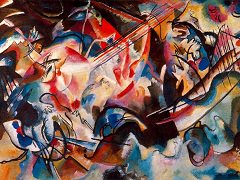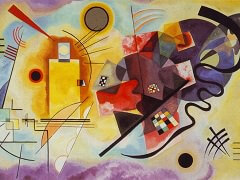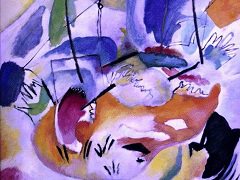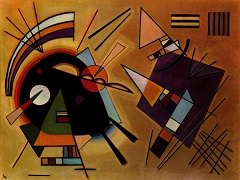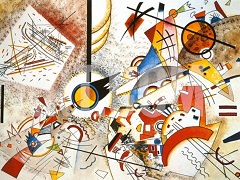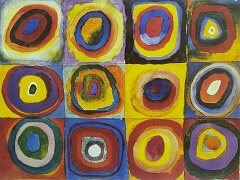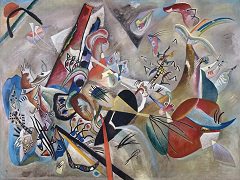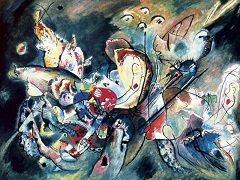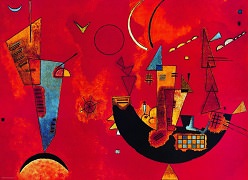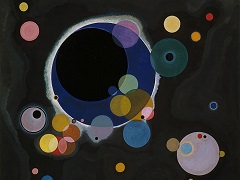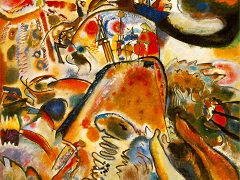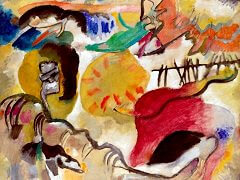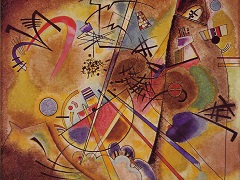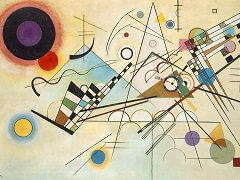Composition VII, 1913 by Wassily Kandinsky
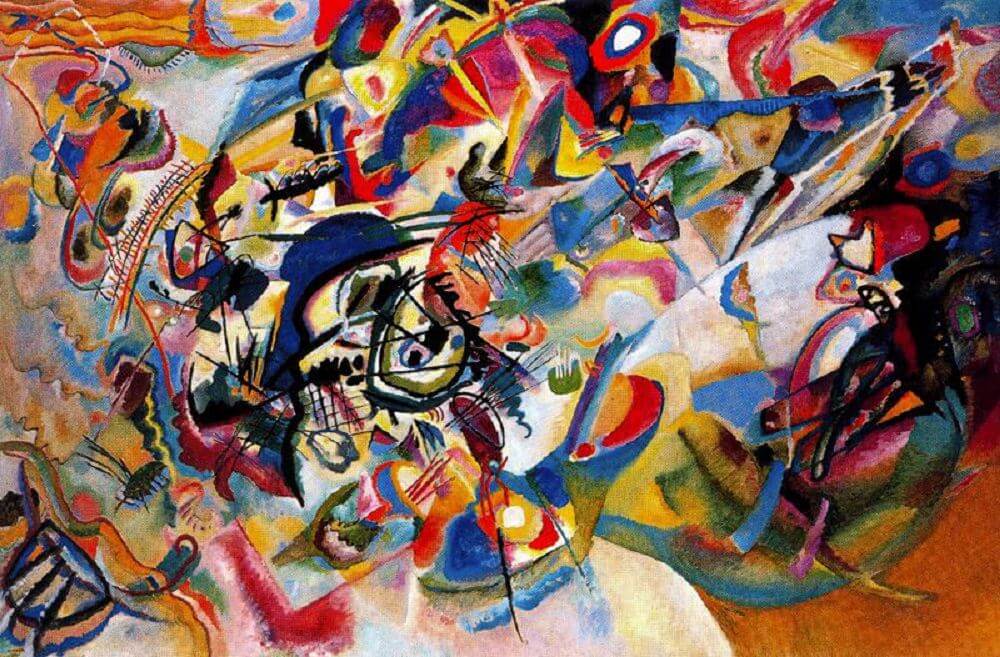
In terms of size, amount of preparatory work, complexity of themes, subjective involvement, and, not least, as an objective pictorial entity Composition VII must be considered Kandinsky's masterpiece. Without doubt it is the acme of his artistic achievements during the period in Munich.
Excluding the sketches and studies for Composition VI (whose elements of Deluge and Resurrection also figure in Composition VII) there are about fifteen versions of related subjects in such different media as glass paintings, drawings, watercolors, woodcuts, and oils. These all center around eschatological themes. For Composition VII alone we know of over thirty drawings and watercolors, some of them detailed studies that recall those drawings of the old masters Caravaggio, Leonardo da Vinci with minute representations of folds, foliage, or limbs of the human body. There are sheets which invariably repeat, up to ten times, one single curved line; others show schematic outlines of the main structural elements of the composition; still others contain detailed plans for preparing the canvas. Further, there are at least ten large studies in oil, some of them difficult to identify as belonging to Composition VII, but all of them doubtlessly related to it either by their inscriptions or by their morphological facts.
On November 25, 1913, Miinter noted in her diary that the canvas for Composition VII had arrived after dinner and that Kandinsky had started to work the same evening. The next morning she took the first photograph of the painting and in the afternoon the second one. Her diary entry on the 28th recorded that the painting had been completed. The following morning she took a photograph of the final state. The birth of a great masterpiece had to be recorded.

